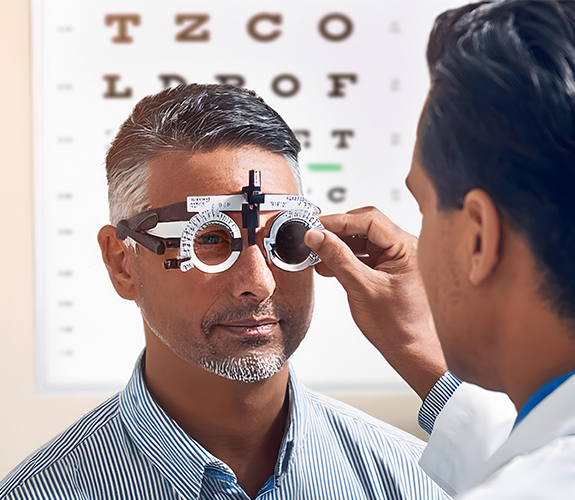Joint pain and mobility issues can profoundly impact an individual's quality of life, hindering their ability to engage in daily activities and fully enjoy life. In cases where conservative treatments fall short, joint replacement surgery is an incredibly effective solution. This ground-breaking procedure has revolutionised the field of orthopaedic medicine, offering a transformative solution that restores mobility and enhances the overall quality of life for countless individuals around the globe.
This blog focuses on joint replacement surgery and how it improves the quality of life.
Understanding Joint Replacement Surgery
Joint replacement surgery, also known as arthroplasty, is a surgical procedure in which a damaged or diseased joint is replaced with a prosthesis. The most common joints targeted for replacement are the hip and knee, but they can also be performed on other joints such as the shoulder, elbow, and ankle.
The procedure involves removing the damaged or arthritic joint surfaces and replacing them with prosthetic components made from metal alloys, high-grade plastics, or ceramic materials. These artificial joints mimic the joint's natural movement, allowing for pain-free mobility and improved joint function.
Restoring Mobility and Alleviating Pain
The primary goal of joint replacement surgery is to relieve pain and restore mobility, enabling individuals to engage in activities they were once unable to perform. Joint pain, often caused by conditions such as osteoarthritis, rheumatoid arthritis, or joint trauma, can be debilitating and greatly affect one's quality of life. By replacing the damaged joint, surgeons alleviate pain and facilitate patients to regain their independence and resume an active lifestyle.
Improving Quality of Life
Joint replacement surgery profoundly impacts a patient's overall quality of life. With reduced pain and improved mobility, individuals can efficiently perform everyday tasks, participate in physical activities, and enjoy hobbies they may have previously abandoned. The freedom to walk painlessly, climb stairs, engage in joint replacement exercise, or simply play with grandchildren can significantly enhance mental well-being and foster a sense of empowerment.
Risks and Complications of Joint Replacement Surgery
Although joint replacement surgery is generally safe and effective, there are possible joint replacement complications such as infection, blood clots, implant issues, joint stiffness, and nerve/blood vessel damage. Patients should know these risks, communicate with their surgeon, and diligently follow post-operative instructions. Regular check-ups and prompt reporting of unusual symptoms can aid in the early detection and management of complications.
While carrying some risks, such as anaesthesia reactions, blood loss, infection, and implant failure, joint replacement surgery significantly improves mobility and quality of life for most patients. These joint replacement risks are relatively low, and factors like age, obesity, and pre-existing medical conditions may increase complications.
Advancements in Joint Replacement Techniques
Over the years, joint replacement techniques and prosthetic designs have advanced significantly, enhancing surgical outcomes and patient satisfaction.
Some notable advancements include:
-
Minimally Invasive Procedures: Minimally invasive techniques employ smaller incisions, resulting in reduced tissue trauma, faster recovery, and less scarring. These procedures minimise blood loss, post-operative pain, and joint replacement complications, allowing patients to return to daily activities more swiftly.
-
Advanced Implant Materials and Designs: High-quality materials like titanium and ceramics, along with improved designs, enhance implant strength and biocompatibility, and mimic natural joint movement, resulting in longer-lasting implants and increased patient satisfaction.
-
Customised Implants: Utilising 3D scanning and computer modelling, implants can be tailored to the patient's anatomy, providing a precise fit and reducing complications like loosening and dislocation.
-
Computer-Assisted Surgery: Computer-assisted techniques enable surgeons to achieve greater precision during joint replacement procedures. Using navigation systems and robotic-assisted surgery allows for more accurate alignment of the prosthetic components, resulting in improved outcomes and better long-term function.
-
Rapid Recovery Protocols: Enhanced joint replacement recovery timeline protocols utilise a multidisciplinary approach, combining pre-operative education, advanced pain management, anaesthesia techniques, and specialised post-operative rehabilitation. These protocols reduce pain, shorten hospital stays, and accelerate rehabilitation, enabling patients to resume their daily activities faster.
These advancements have improved surgical precision, reduced complications, and facilitated faster recoveries, ultimately enhancing the quality of life for individuals undergoing joint replacement surgery.
The Importance of Rehabilitation
While joint replacement surgery offers remarkable benefits, successful outcomes rely on comprehensive rehabilitation. Rehabilitation programmes aim to strengthen the surrounding muscles, restore the range of motion, and improve flexibility. Physical therapy, exercises, and lifestyle modifications are crucial to recovery after joint replacement, helping patients regain strength, balance, and coordination.
Exercises are vital for the success of joint replacement surgery. Pre-surgery exercises strengthen muscles, improve flexibility, and facilitate a smoother recovery. Post-surgery, customised joint replacement exercises restore the range of motion, strengthen the new joint, and enhance overall mobility. These exercises are crucial for rehabilitation.
Alternatives
Joint replacement surgery is typically a last resort for severe joint pain and limited mobility. Before considering surgery, joint replacement alternative treatments such as physical therapy, medication, lifestyle adjustments, and assistive devices can be explored. Consulting with a healthcare professional is essential to determine the most suitable option based on individual circumstances.
Conclusion
Joint replacement surgery has revolutionised orthopaedic medicine, providing a transformative solution that restores mobility, alleviates pain, and enhances the overall quality of life. With advancements in techniques and materials and comprehensive rehabilitation programmes, patients can now enjoy pain-free movement, regain independence, and engage in activities that bring joy and fulfilment. Joint replacement surgery truly opens the door to a life of mobility, vitality, and renewed possibilities. If you are searching for ‘joint replacement surgeons near me’, look no further than Saroj Super Speciality Hospital. With state-of-the-art technology and years of expertise, our team ensures the best treatment and a smooth recovery process.
FAQ’s About Joint Replacement Surgery
Q. What is joint replacement surgery?
A. Joint replacement surgery is when a damaged or arthritic joint is removed and replaced with a prosthesis. This surgery aims to relieve pain, improve joint function, and enhance the patient's quality of life.
Q. Which joints can be replaced through joint replacement surgery?
A. The hip and knee joints are the most common joints that can be replaced through joint replacement surgery. However, other joints, such as the shoulder, elbow, and ankle, can be replaced, although these procedures are less common.
Q. How do I know if I need joint replacement surgery?
A. Joint replacement surgery is usually considered when non-surgical treatments like medications and therapy do not provide sufficient relief. The decision is based on medical history, physical examination, and imaging tests to assess joint damage and overall health.
Q. What are the benefits of joint replacement surgery?
A. The benefits of joint replacement surgery include reduced pain, improved joint function and mobility, increased stability, and improved quality of life. It can enable individuals to engage in daily activities with less discomfort and participate in physical activities they previously could not do due to joint pain.
Q. How long does it take to recover from joint replacement surgery?
A. Recovery time after joint replacement surgery varies based on factors like joint type, overall health, and adherence to rehabilitation. Typically, a hospital stay of a few days is followed by several weeks or months of physical therapy. It may take several months to a year to fully recover and restore joint strength and mobility.
Q. Are there any risks or complications associated with joint replacement surgery?
A. Joint replacement surgery carries risks and potential problems like any other surgical treatment. These can include infection, blood clots, bleeding, nerve injury, dislocation of the joint, implant failure, and complications related to anaesthesia. However, serious complications are relatively rare, and the benefits of joint replacement surgery often outweigh the risks.
Q. What is the lifespan of a joint replacement implant?
A. The lifespan of a joint replacement implant varies based on factors such as joint type, materials used, patient activity level, and overall health. Joint replacements typically last 15 to 20 years or longer. However, younger patients and those with high-impact activities may experience more wear, potentially necessitating revision surgery in the future.
Q. Can I engage in physical activities after joint replacement surgery?
A. After full recovery and the surgeon's approval, you can participate in physical activities post-joint replacement surgery. Gradually start and follow a rehab programme to rebuild strength and flexibility. Opt for low-impact activities like walking, swimming, and cycling while avoiding high-impact activities to minimise stress on the replaced joint.
Q. What are the non-surgical treatment options for joint pain?
A. Before considering joint replacement surgery, non-surgical treatment options for joint pain may include pain medications, physical therapy, joint injections (e.g., corticosteroids or hyaluronic acid), assistive devices (e.g., braces or canes), weight management, and lifestyle modifications (e.g., exercise, avoiding activities that worsen pain).
Q. How can I prepare for joint replacement surgery?
A. To prepare for joint replacement surgery, consult your surgeon and follow their instructions for evaluations and tests. Share your medications and concerns. Maintain a healthy lifestyle with a nutritious diet, exercise, and avoid smoking. If overweight, try to lose weight. Follow recommended pre-operative exercises to improve joint strength and flexibility. Arrange a support system for recovery and adhere to pre-operative instructions from your surgeon.



